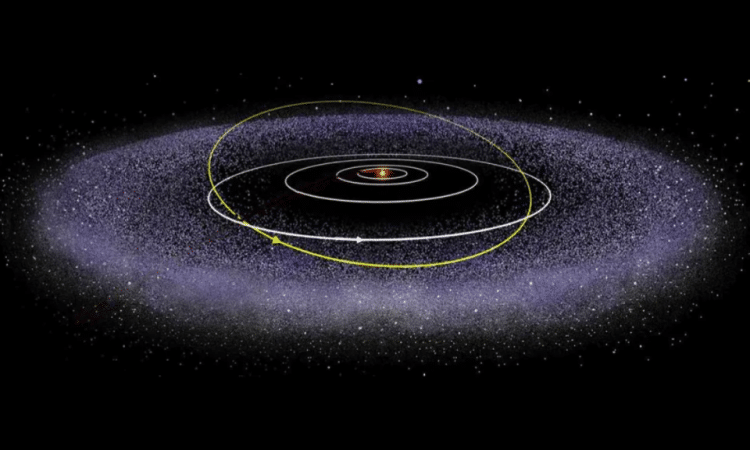
Two recent studies suggest that the Kuiper Belt extends well beyond Neptune, revealing a more complex structure than expected.
Beyond the orbit of Neptunethe most distant planet in the Solar System, there is a region rich in asteroids and small celestial objects: the Kuiper Belt. , considered a remnant of planetary formation, has so far been thought to be between 30 and 55 astronomical units (AU) from the Sun (1 AU corresponds to the Earth-Sun distance). However, two recent studies published on Planetary Science Journal and available in pre-print on arXiv, suggest that the Kuiper Belt extends well beyond this distance, revealing a more complex structure than expected.
Advertisement
A double Kuiper Belt
New research indicates that the Kuiper Belt is not a single continuous zone, but is composed of two concentric areas rich in asteroids, separated by a region almost devoid of celestial bodies. , similar to the outskirts of many forming planetary systems, revolutionizes our understanding of this remote region of the Solar System.
Collaboration between NASA and NAOJ
This discovery is the fruit of collaboration between the mission New Horizons of NASA and the Subaru Telescope, operated by the National Astronomical Observatory of Japan (NAOJ). The Subaru Telescope, located in Hawaii, has conducted observations over the years to support the probe’s work New Horizons. While the telescope screens objects in the Kuiper Belt with its wide-field camera, the probe observes them closely as it passes through the region.
Discovery of “out of place” asteroids
Thanks to this collaboration, which began in 2004, 263 Kuiper Belt objects have been identified. Of which 11 are above the limit traditionally accepted for this range. Although previous studies have already suggested the existence of objects beyond the outer margin, this is the first time that such a significant number of “out of place” celestial bodies have been identified in a relatively small area, suggesting that they are not isolated cases or detection errors.
Implications for the study of planetary formation
According to Fumi Yoshida, co-author of one of the two studies, these objects could belong to a second ring of the Kuiper Belt, separated by an almost “hole”. “If confirmed, this would be a fundamental discovery,” says the researcher. This hypothesis suggests that the primordial solar nebula, from which the Solar System originated, was much larger than previously thought, with important implications for the study of planetary formation processes.
What should we expect
Wes Fraser, lead author of the other study, adds. “The Kuiper Belt of our solar system has long seemed small compared to that of many other planetary systems. Our results suggest that this idea may have been the result of observational error.” Observations conducted with the Subaru Telescope have in fact detected a significant Kuiper Belt mass at a distance from the Sun between 70 and 90 AU. If these results are confirmed, the Kuiper Belt may not be as small and peculiar as once believed. It may resemble those observed.
Read more:

